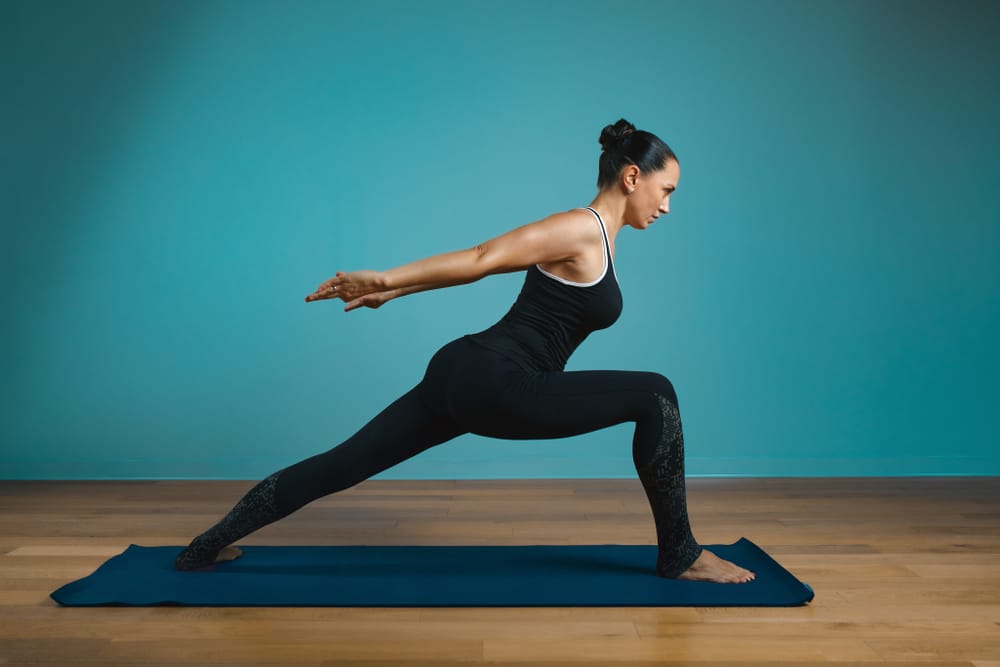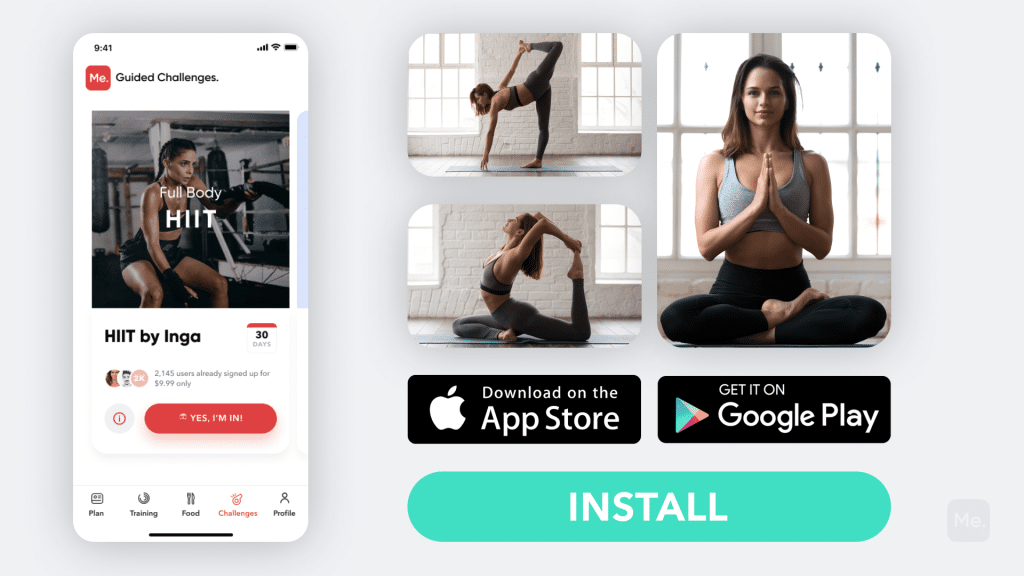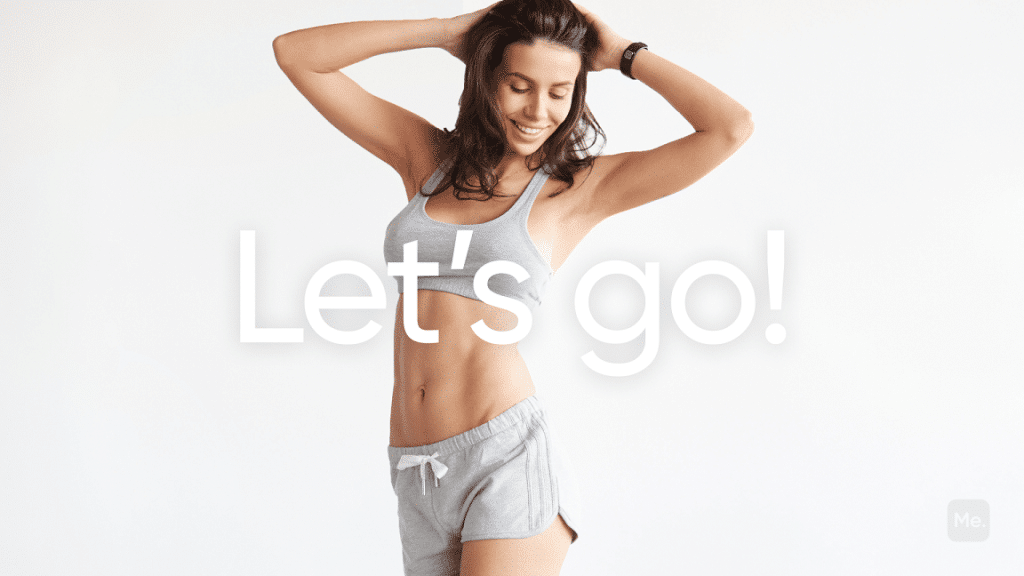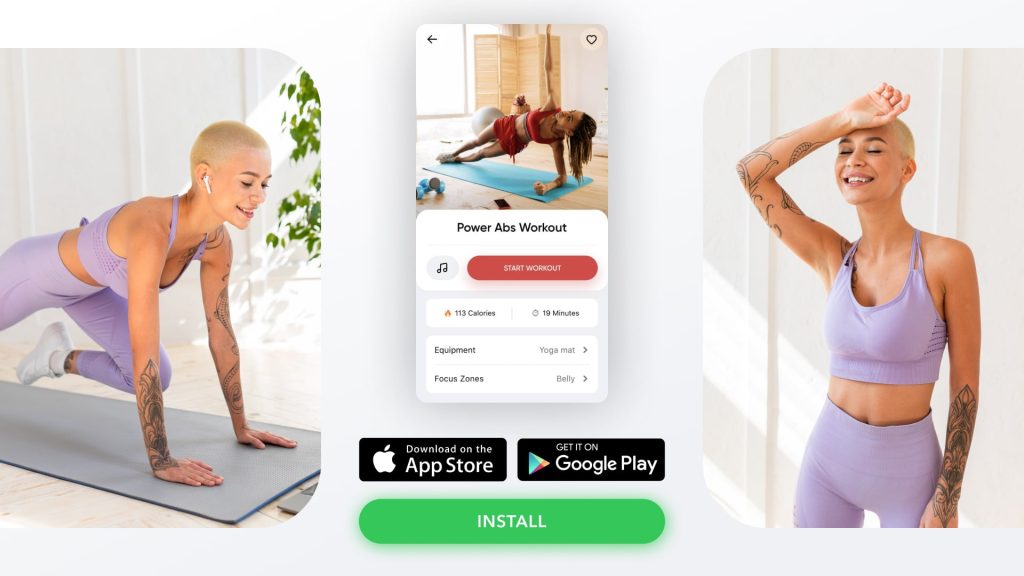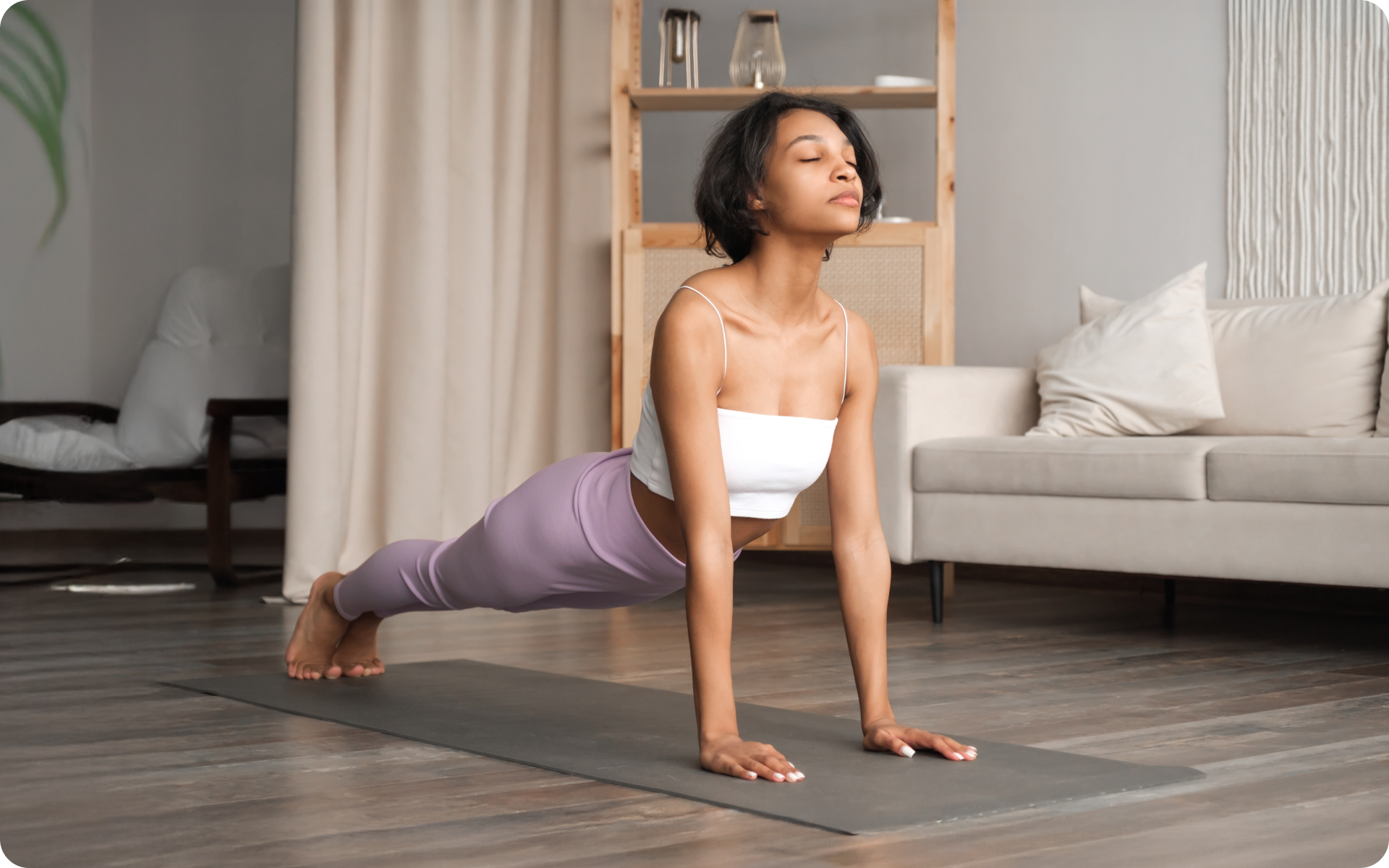Stretching is something that many of us do not tend to think about unless it happens throughout the day, especially if you spend too much time in one position. However, athletes, people working in rehabilitation centers (or patients), or people who like to work out know that there are different types of stretching and incorporating them into your day-to-day will have incredible benefits to your body.
In this article we are going to take a deeper look into active stretching, give you active stretching examples, show you the difference between this type of stretching and other kinds, and even tell you the advantages and disadvantages – if any – of this type of stretch.
What Is Active Stretching?
Like all other types of stretches, active stretching is a method of improving flexibility. It is said to generally involve moving a limb through its full range of motion to the end ranges and repeating several times (2). In simple terms, active stretching involves contracting one muscle as a way to help stretch another muscle. This is often done without the use of workout accessories such as straps or bands.
An important fact to note is that active stretching can be either static or dynamic, which refers to:
- Static active stretching – It can be done by either standing, sitting or lying still and holding a single position for a period of time, anywhere between 10 to 45 seconds.
- Dynamic active stretching – Here you have to put your muscles and joints through their range of motion. This is usually done before a workout and will often mimic the workout or physical activity that you are about to perform.
Read More: Pre-Workout Stretches: Preventing Injury, Pain And Strains The Right Way
Active Vs. Passive Stretching: What Is The Difference?
When it comes to passive vs active stretching, the difference is in the use or lack of an outside force to help with the activity in question. One 2015 study differentiated these two by stating that – Active stretching increases the flexibility of tight muscles while concomitantly improving the function of antagonistic muscles. In contrast, passive stretching is characterized by the addition of stretch stimulation on muscle contraction independent of the subject (3).
This is layman’s terms means that
- Active stretching requires no external force, meaning that you are using your own body, strength, and muscles to go through the motions and stretch the muscles.
- Passive stretching on the other hand involves an external force that helps you stretch instead of you actually doing it yourself. If a friend/partner is helping to pull or push a muscle during a stretch or you are using yoga straps or bands during this activity, then this qualifies as a passive and not an active stretch.
This, however, is not the only difference attached to active vs passive stretching. According to American Sports and Fitness, passive stretching is a fantastic way to improve flexibility and works best as a cool down after working out, while active stretching is best used as a warm up as it promotes blood and oxygen flow to your muscles.
What Is Active Isolated Stretching?
According to active.com active isolated stretching is a stretching technique that was developed over 30 years ago by Aaron Mattes, a registered Kinesiotherapist and Licensed Massage Therapist. Mattes is said to have developed this technique as a way to help athletes become more agile, hopefully preventing injury during any competition or sporting activities.
How To Do Active Isolated Stretching At Home
While the technique was initially meant for athletes, it can be used by anyone who wishes to improve their agility. Here are the basic principles that you should follow if you wish to incorporate active isolated stretching into your routine:
- Isolate the muscle to be stretched – This is done by actively contracting the opposite muscle. For example, if you are looking to stretch the triceps (the muscle underneath your arm), you must first actively contract the bicep (the opposite muscle to the triceps located at the top of the arm).
- Repeat the stretch eight to 10 times – This helps increase the circulation of blood, oxygen, and nutrients to the muscles being stretched, which will eventually lead to you gaining more flexibility in the muscle. Plus the more nutrients a muscle gains, the more it is able to flush out toxins.
Increased toxins in the muscles – which can be as a result of – can lead to rhabdomyolysis, a condition that can cause dehydration, muscle breakdown, kidney failure, and even death in severe cases.
- Hold each stretch for no more than two seconds – This helps prevent the stretch flex aka the myotatic reflex which happens three seconds into a stretch. According to runners.com, the myotatic reflex is a protective muscle action that happens when the muscle in question is stretched either too far, too fast, or for too long.
When either of these 3 actions occurs, the muscle tends to automatically and ballistically recoil in an attempt to prevent the muscle from tearing. Therefore, holding a stretch for no more than two seconds and repeating the movement up to 10 times helps increase your range of motion, without the threat of overstretching, strains, sprains, and tears.
- Exhale on the stretch; inhale on the release – This helps circulate oxygen in the muscle being actively stretched. For your muscles to perform at optimal capacity, they require enough oxygen and without it, it can lead to the formation of lactic acid. When the acid accumulates in the muscles, it makes them feel more sore and fatigued, less powerful and makes us more prone to injury.
If you’ve mustered up the courage to crush your weight loss goal, let Betterme take the sting out of this demanding process. Our app will help you restructure your habits, remold your life and crank up your fitness results!
Active Isolated Stretching Neck Exercises
Neck tension is a problem that affects a lot of people today. According to Medical News Today, this tension can be caused by several issues such as:
- Poor posture. Especially if you spend most of your day hunched over a computer, looking down at your phone, or even slouching in your chair.
- Repetitive neck movements.
- Teeth grinding – which puts pressure on your jaw and neck.
- Sleeping in a bad position or even using the wrong kind/size of the pillow.
- Stress – which causes your muscles to become tense and contract. This is one of the biggest culprits of tension headaches and migraines (4).
If you have been experiencing neck pain, incorporating the following active isolated neck stretching exercises might be helpful to you:
Stretch Neck Oblique Muscles
- Start by standing up with your spine straight and face the right side about 45 degrees.
- Put your right hand behind your back and keep your core engaged.
- Slowly tilt your head to the opposite side – Think of this action as what you would do if you were trying to get water out of your ear.
- You can use your left hand to tilt your head if you want.
- Remember to breathe, only keep the stretch for two seconds, and to keep the left shoulder down as you stretch away from it.
- Do this up to 10 times before switching to the left side and repeating the process.
Side-To-Side Neck Extensions
- Stand with your spine straight and your head high.
- Put both hands behind your back and use your right arm to hold the left hand anchoring it and the shoulder down so that it does not move as you stretch.
- Stretch the head away from the anchored shoulder by leading to the other side.
- Remember to breathe, keep your core engaged, and only hold the stretch for 2 seconds before coming back up.
- Do this two times before switching arms and the side that your head is leaning.
Active isolated stretching does not just work for the neck alone. It can be used to help stretch bigger muscles like those in your arms and legs or even much smaller muscles in the wrists, and fingers too. Stretching your hands, wrists, and fingers is very important, especially for people who type a lot, artists, or even people who are working out and lifting weights.
Some isolated active stretching examples include:
Wrist Extension
- Hold your arm out in front of you with the palm facing down at a slightly lower angle than where your shoulder is.
- Lift the wrist up, extending your hand towards you as though you were trying to look at your nails. You can use your other hand to assist with the stretch by gently pulling it back and pressing it down.
- Keep the basic active isolated stretching techniques in mind.
Wrist Extension II
- Repeat the same process as in the exercise above but this time flex your hand down at the wrist.
- If you choose to assist with your other hand, make sure to press down at the hand and not the fingers.
Read More: Static Stretching: The Ultimate Post-Workout Routine
What Are The Benefits Of Active Stretching?
Stretching in whichever form, whether static or dynamic has been shown to have incredible benefits on the body. According to a 2012 study that looked at the benefits of strength, flexibility, and stability exercises, static stretching exercises help to improve joint range of motion and tolerance to stretching but do not appear to reduce the risk of musculoskeletal injury and may impair muscle performance immediately after a static stretch.
Dynamic stretching, on the other hand, can enhance power and improve sports-specific performance (1). Since active stretching can be both dynamic and static, it has the following benefits:
- Less muscle tightness. Active stretching is often done as part of the warm up which helps circulate blood and oxygen to the muscles, loosening them up for exercises to come. When you workout without the warm-up your muscles tend to feel tighter and this can lead to injury.
- Better circulation. As stated above, this simple exercise helps to push blood, oxygen, and important nutrients to your muscles and joints.
- Pain relief especially after an injury. Active isolated stretching is often used by injured athletes as part of their recovery program.
- Improved performance. When your muscles are stretched and loose, you are able to move around better and be more agile which will boost your performance at your sport of choice or even in the gym.
- Better flexibility. If you are wondering ‘how does active stretching improve flexibility?’, the answer lies in the improved range of motion in the joints and muscles. For example, if you are constantly and actively stretching and opening your hips, you may eventually find it easier to do deeper squats, sit cross-legged, or even do splits.
Reasons why BetterMe is a safe bet: a wide range of calorie-blasting workouts, finger-licking recipes, 24/7 support, challenges that’ll keep you on your best game, and that just scratches the surface! Start using our app and watch the magic happen.
Which Is A Disadvantage Of Active Stretching?
While this exercise is generally encouraged due to its multiple benefits, sometimes it can cause more harm than good. Some disadvantages of active stretching exercises include:
- It can heighten the risk of injury – As previously stated, active stretching is fantastic as it raises body’s temperatures, loosen stiff muscles, bolster coordination, awareness, muscle contractility and elasticity, and cardiovascular and respiratory systems’ efficiency, while also making for better performance (5). However, if done the wrong way it can lead to injury in muscles and joints.
- Does not work very well if you are injured – As mentioned above, this kind of exercise requires no external assistance either from a person or even stretching tools. The problem with this is that if you are injured then there is no way for you to perform the stretches as you may not be able to achieve the required range of motion without help.
The Bottom Line
Active stretching, like all other forms of this exercise, is important and should be incorporated in some form or the other in your routine. Not only will it help you become more flexible, but it also helps with circulation, better coordination – especially in older adults – and increases athletic performance. If you choose to try this type of stretching, please make sure that you are using the right techniques or get a friend or better yet a professional to assist you so you can be safe and not injure yourself.
If you have decided to lose weight as fast as possible, make sure you dive into both dieting and regular workout. Consider trying this 20 Minute Full Body Workout at Home.
DISCLAIMER:
This article is intended for general informational purposes only and does not address individual circumstances. It is not a substitute for professional advice or help and should not be relied on to make decisions of any kind. A licensed physician should be consulted for diagnosis and treatment of any medical conditions. Any action you take upon the information presented in this article is strictly at your own risk and responsibility!
SOURCES:
- Basic Principles Regarding Strength, Flexibility, and Stability Exercises (2012, researchgate.net)
- CURRENT CONCEPTS IN MUSCLE STRETCHING FOR EXERCISE AND REHABILITATION (2012, ncbi.nlm.nih.gov)
- Immediate effect of passive and active stretching on hamstrings flexibility: a single-blinded randomized control trial (2015, ncbi.nlm.nih.gov)
- Level of physical activity, well-being, stress and self-rated health in persons with migraine and co-existing tension-type headache and neck pain (2017, thejournalofheadacheandpain.biomedcentral.com)
- The effect of warm-up, static stretching and dynamic stretching on hamstring flexibility in previously injured subjects (2009, bmcmusculoskeletdisord.biomedcentral.com)
